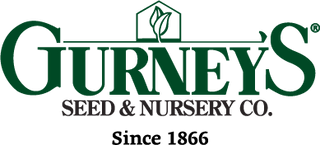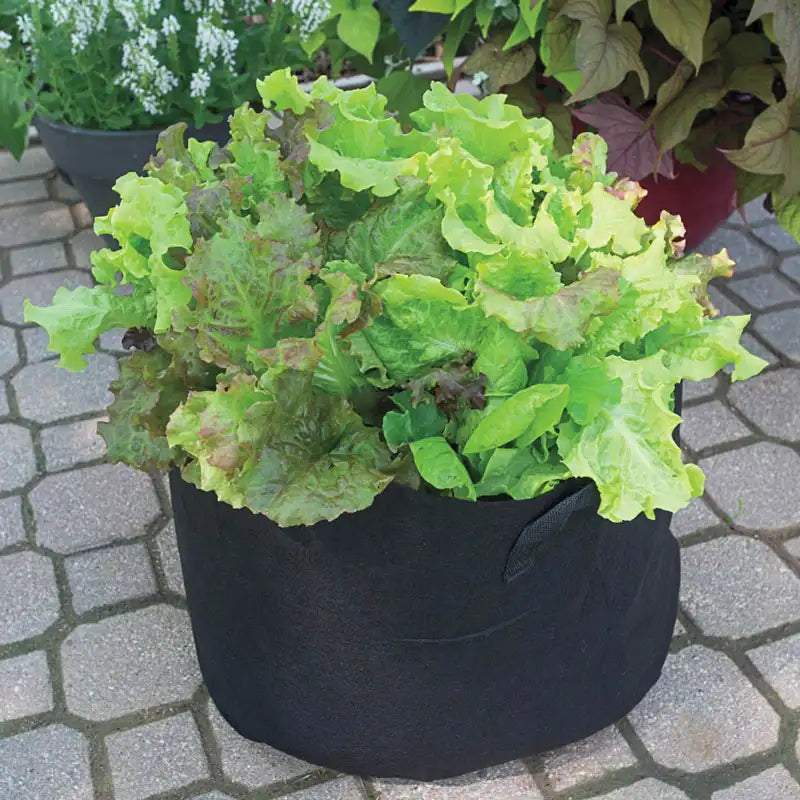Gardening for the Differently Abled
(And all of us who are Simply Getting Less Young)
Q. Julianne in Glenside, PA (home of the fabulous Keswick Theatre, where back in the day, I saw Dave Mason and Steven Stills, among many others who appeared at the historic 1300 seat venue.) While I'm digressing, upcoming shows include Steve Earle, Shawn Colvin, the Red-Hot Chili Peppers and MY kind of oldies show, featuring the Turtles, Gary Puckett and the Union Gap, Classics IV and the Cowsills!
Anyway, Julianne writes: "I'd love to hear your tips, tricks, and advice for people who love to garden but have to contend with physical disabilities or limitations. I'm only in my 30s but I've had a lot of health problems this year, including a broken foot, and I'm not fully back up to speed in the garden. But gardening is SO important to my mental health. I'm sure there are people of all ages with a variety of physical issues that would love to hear how to garden in the body they have right now."
A. This topic is so important that I devoted an entire talk on it for some of my personal appearances, advised the creators of a planned community garden on how to make sure the result would be ADA (Americans with Disabilities Act) compliant and designed a small scale working garden for a facility whose residents had physical limitations.
Bullet point time:
• Wide lanes. The walking paths in my garden, installed when I was in my thirties, are much too small to accommodate a wheelchair or a walker. (They can barely accommodate me!) Luckily, half of the (original) beds were framed with local fieldstone, and 'we' (my helper and I) are slowly repositioning the stones inward to make walking easier.
• Balance. I do NOT want to fall on uneven ground, so with the aid of my helper, we are tamping down the uneven areas. (OK; the helper does the work; I stand there and say, "you missed a spot".)
• Garden Grab bars. These can be ornamental or just pipes hammered into select areas of the garden in case you start feeling unsteady. If you have (or can create) a vertical garden up against a sturdy wall or fence that faces South or East, consider installing real bathroom-style grab bars to help you get down a little lower and get back up without calling for help.
• Grow up. Install tall growing perennials in flat earth areas and raised beds that are of {quote} 'normal height' so the flowers will be up where you want them. Trellis anything you can, like pole beans, indeterminate tomatoes and cucumbers, for easy picking and no bending.
• Critical: If you find yourself beginning to bend, stop immediately and rethink the chore. As with envelopes with photos inside: "DO NOT BEND!" might make a nice little sign for the garden.
• Tabletop gardening. Do you have a nice flat patio or other outdoor space with full sun? Get some of them big white folding tables, or even better, pic-a-nic tables, and arrange good sized planters around the edges. If you buy the tables new, make sure they will be assembled and installed on-site. Use the containers to grow flowers, herbs, well-behaved pepper plants and determinate tomato varieties that specifically define themselves as 'bush' or 'dwarf'.
• Don't stoop to the level of weeds!
• Wadder: There are many devices that do the job of dispatching unwanted plants while you remain standing, like The Water Powered Weeder (a long spike that you attach to your garden hose, shove into the soil, press the trigger and it floods the weed up and out of the soil.
• Fire! My favorite stand-up weed killer is a propane-powered 'flame weeder'. My preferred model was introduced by Bernzomatic decades ago. It's a simple shepherd's hook design. You attach a small (camp stove-sized) propane bottle on the short end, turn a dial to release the gas and click the automatic igniter that shoots an adjustable flame at the weeds you wish to kill by dehydration (or burn to a crisp because it has gotten personal with you). Note: There are many other styles out there; stick to the shepherd's hook. (The original name was the 'Bernzomatic Yard and Garden Torch'.) Jacob: It's the second one from the left at this site.
Additional resources:
• One of the best sites I found online is produced by the Victoria State Government Department of Health in conjunction with the Horticultural Therapy Association of Victoria, Inc. (Yes, it's from Australia, but every word is relevant to us in the US (and other countries.) They cover many great ideas I didn't have room to mention here, and have an audio link for the vision impaired.
• Money and labor; the elephants in the room. Any enterprise like this is going to require some amount of initial investment. If you can't afford it, reach out to your city, state or municipality to see if they can subsidize some or all of the project. (Note: There are many ADA sponsored projects but they seem to be limited to schools and community gardens.)
• Labor: If you can't afford to hire a part-time helper, contact your local Girl Scout and Boy Scout organizations. Making a garden handicapped accessible would be a great Eagle Scout or Gold Star (Girl Scout version of Eagle Scout) project.
Anyway, Julianne writes: "I'd love to hear your tips, tricks, and advice for people who love to garden but have to contend with physical disabilities or limitations. I'm only in my 30s but I've had a lot of health problems this year, including a broken foot, and I'm not fully back up to speed in the garden. But gardening is SO important to my mental health. I'm sure there are people of all ages with a variety of physical issues that would love to hear how to garden in the body they have right now."
A. This topic is so important that I devoted an entire talk on it for some of my personal appearances, advised the creators of a planned community garden on how to make sure the result would be ADA (Americans with Disabilities Act) compliant and designed a small scale working garden for a facility whose residents had physical limitations.
Bullet point time:
• Wide lanes. The walking paths in my garden, installed when I was in my thirties, are much too small to accommodate a wheelchair or a walker. (They can barely accommodate me!) Luckily, half of the (original) beds were framed with local fieldstone, and 'we' (my helper and I) are slowly repositioning the stones inward to make walking easier.
• Balance. I do NOT want to fall on uneven ground, so with the aid of my helper, we are tamping down the uneven areas. (OK; the helper does the work; I stand there and say, "you missed a spot".)
• Garden Grab bars. These can be ornamental or just pipes hammered into select areas of the garden in case you start feeling unsteady. If you have (or can create) a vertical garden up against a sturdy wall or fence that faces South or East, consider installing real bathroom-style grab bars to help you get down a little lower and get back up without calling for help.
• Grow up. Install tall growing perennials in flat earth areas and raised beds that are of {quote} 'normal height' so the flowers will be up where you want them. Trellis anything you can, like pole beans, indeterminate tomatoes and cucumbers, for easy picking and no bending.
• Critical: If you find yourself beginning to bend, stop immediately and rethink the chore. As with envelopes with photos inside: "DO NOT BEND!" might make a nice little sign for the garden.
• Tabletop gardening. Do you have a nice flat patio or other outdoor space with full sun? Get some of them big white folding tables, or even better, pic-a-nic tables, and arrange good sized planters around the edges. If you buy the tables new, make sure they will be assembled and installed on-site. Use the containers to grow flowers, herbs, well-behaved pepper plants and determinate tomato varieties that specifically define themselves as 'bush' or 'dwarf'.
• Don't stoop to the level of weeds!
• Wadder: There are many devices that do the job of dispatching unwanted plants while you remain standing, like The Water Powered Weeder (a long spike that you attach to your garden hose, shove into the soil, press the trigger and it floods the weed up and out of the soil.
• Fire! My favorite stand-up weed killer is a propane-powered 'flame weeder'. My preferred model was introduced by Bernzomatic decades ago. It's a simple shepherd's hook design. You attach a small (camp stove-sized) propane bottle on the short end, turn a dial to release the gas and click the automatic igniter that shoots an adjustable flame at the weeds you wish to kill by dehydration (or burn to a crisp because it has gotten personal with you). Note: There are many other styles out there; stick to the shepherd's hook. (The original name was the 'Bernzomatic Yard and Garden Torch'.) Jacob: It's the second one from the left at this site.
Additional resources:
• One of the best sites I found online is produced by the Victoria State Government Department of Health in conjunction with the Horticultural Therapy Association of Victoria, Inc. (Yes, it's from Australia, but every word is relevant to us in the US (and other countries.) They cover many great ideas I didn't have room to mention here, and have an audio link for the vision impaired.
• Money and labor; the elephants in the room. Any enterprise like this is going to require some amount of initial investment. If you can't afford it, reach out to your city, state or municipality to see if they can subsidize some or all of the project. (Note: There are many ADA sponsored projects but they seem to be limited to schools and community gardens.)
• Labor: If you can't afford to hire a part-time helper, contact your local Girl Scout and Boy Scout organizations. Making a garden handicapped accessible would be a great Eagle Scout or Gold Star (Girl Scout version of Eagle Scout) project.




